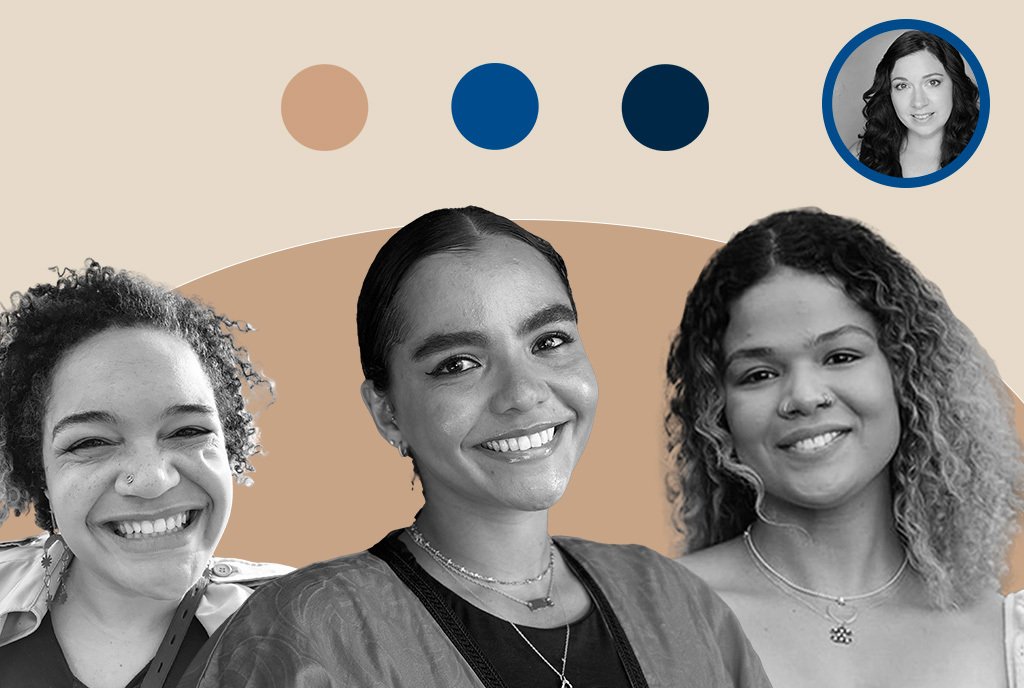
“When people here see trees, they see a bill.” That’s according to Henry Davis, a District 2 council member in South Bend, IN. Davis told the South Bend Tribune in 2021 that residents were skeptical of the city’s plan to plant more trees. A lot more trees: 40,000 native saplings by the year 2050. Fearing that trees meant increased maintenance costs and damage to their homes, some citizens of South Bend protested the city’s initiative to create an urban forest.
In the three years since the city announced its plan, to questions and grumblings, the USDA awarded the community a huge grant in support of its leafy goals. South Bend and its community partners received a $1.87 million USDA Forest Service Urban and Community Forestry grant in 2023 through a competitive application process. Later that same year, the EPA awarded a $500,000 grant to local nonprofit enFocus, which hires young professionals to work in small communities in the northern Indiana area. A large part of that grant involves planting trees, which the nonprofit started in January 2024.
In many places around the globe, it’s dangerous to go outside without shade—even deadly.
As leaders prepare to make the city greener, what’s behind a community’s hesitation and the push for trees in the first place? In the city of South Bend—which has a poverty rate of over 20 percent, nearly twice that of the national average—and beyond, how can trees help make communities and neighborhoods more equitable?
Mental, Physical, and Community Health
The advantages of greener communities have been well-documented. As the Sierra Club wrote in 2022, trees help “communities to thrive. Study after study demonstrates a clear relationship between tree coverage and physical health: green spaces and shade trees promote physical activity and purify the air from pollutants.” One study published in Environmental Pollution found urban trees in the United States prevented 850 premature deaths along with 670,000 incidents of acute respiratory distress in one year alone. The study estimated the yearly health benefits of trees were worth nearly $7 billion.
People are more likely to leave the house or apartment and engage with their community if there’s shade for outdoor gatherings.
Those benefits include boosts to both physical and mental health. Being exposed to an urban forest reduces anxiety, stress, and depression, and boosts positive moods. As Yale Climate Connections wrote, “Trees help people feel better,” citing multiple studies including one following patients in a hospital in Pennsylvania, which found “those with views of a tree through their window had significantly shorter recovery times following gallbladder surgery.” Living in an urban forest supports a more active lifestyle. People have access to running and walking trails. They’re more likely to spend time outside, time which is often active, involving exercise, playing, or games.
The benefits of living among or near trees extend to feelings of general wellbeing. “Residents in communities with more trees feel a greater sense of connectedness, belonging, and trust,” according to Yale Climate Connections. People are more likely to leave the house or apartment and engage with their community if there’s shade for outdoor gatherings.
The Importance of Shade
This has become increasingly important as climate change heats up the world. In many places around the globe, it’s dangerous to go outside without shade—even deadly. NPQ has reported both on escalating deaths in times of climate emergency, including during heat waves with higher and higher temperatures, and how children, in particular, are suffering. For the youngest community members, trees provide a break from deadly temperatures and blisteringly hot playground equipment. In other words, trees make it easier for an essential yet threatened aspect of many childhoods, and a right of all children: playing outside.
Urban forests also help curb air pollution, purifying the air and removing carbon from the atmosphere. The surfaces of leaves can filter air particles while leaf spores absorb pollutants. The Sierra Club described trees as the world’s “largest natural carbon sinks,” with one report “indicat[ing] that urban forests account for nearly one-fifth of the carbon captured in the entire country.”
Sign up for our free newsletters
Subscribe to NPQ's newsletters to have our top stories delivered directly to your inbox.
By signing up, you agree to our privacy policy and terms of use, and to receive messages from NPQ and our partners.
Research studies have also tracked the impact of trees on crime reduction. It’s a surprising association, but as Yale Climate Connections reported, tree cover was linked “with reduced gun assaults in Philadelphia, and trees located on public property were found to have a 40% greater crime reduction impact compared to trees on private property.” While a wooded area might seem to provide concealment for committing crime, as the Yale School of Forestry and Environmental Studies wrote, “Widely spaced, high-canopy trees and grassy areas may discourage crime by preserving visibility. Residents who come out to enjoy the shade” may also keep an eye on their communities.
“Some of our most vulnerable neighborhoods are lacking urban tree canopy.”
The Costs of a Canopy
With so many benefits, what’s the problem with trees? For starters, they aren’t cheap to plant and are especially expensive to maintain.
As one South Bend resident, Paula Johnson, told the South Bend Tribune, trees “affect homeowners because whether they are across the street from your property or connected to your property, that falls on you.” Trees or limbs can fall on roofs or cars during storms. Left unchecked or planted in the wrong place, the roots of trees can creep up against houses, damaging foundations.
Of the trees already planted in the city, Johnson said some were sick, overgrown, or in need of care, including a mulberry tree which dropped its staining berries all over the sidewalk. “[Johnson] can’t afford to have the tree pruned and neither the city nor the property owner are handling the maintenance,” as the South Bend Tribune reported.
Some of the existing trees in the city are nonnative, according to Davis, which can lead to invasive, out-of-control spreading. Davis said South Bend’s urban forest initiative—which is centered on planting native trees—includes money for trimming and maintenance. The city has already identified “vacant lots, stormwater retention basins, and public schools as sites capable of housing 23.5 acres of additional urban tree nursery space to grow 9,000 trees over 3-5 years,” according to a press release from South Bend mayor James Mueller’s office.
Large-scale planting is scheduled to begin this spring, after meetings took place with community members and leaders to determine the best locations for trees, with a focus on underused, vacant land in underserved neighborhoods. This will remove the burden of caring for trees from many residents who are elderly or may struggle with the costs of upkeep. “Trees provide so many benefits to our community, and some of our most vulnerable neighborhoods are lacking urban tree canopy,” according to South Bend’s Office of Sustainability project manager, Barbara Dale. “That is why we’re incorporating environmental justice as a core component of our forestry efforts.”
The aim of the city is to reach 40 percent urban tree canopy, ensuring almost half of the community has shade and the myriad other benefits trees provide. “Our urban forest makes our neighborhoods more vibrant and adds protection from extreme heat and flooding events,” according to Mayor Mueller, who said the planned trees will “advance our climate action plan.”











